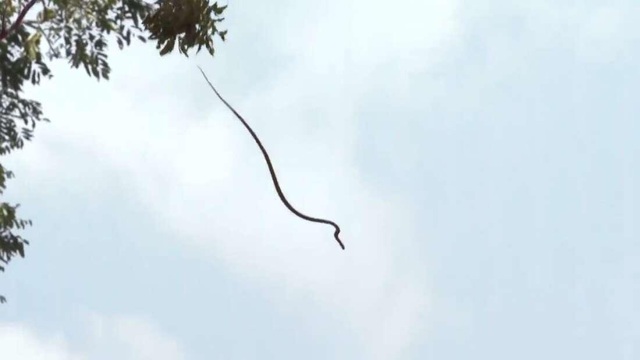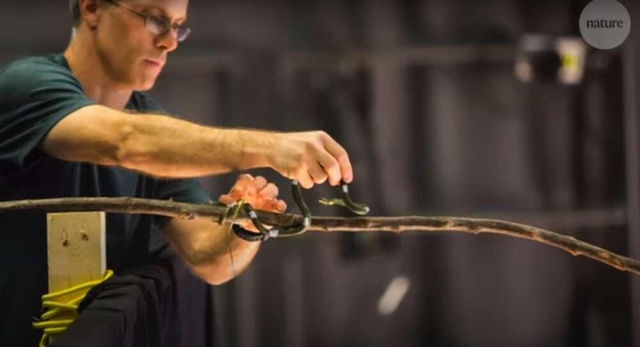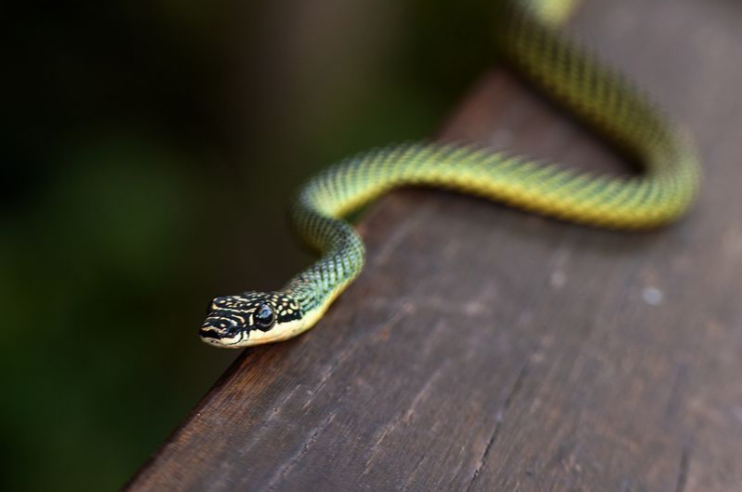Snakes of the genus Chrysoplelea can climb trees and then push themselves out and glide through the air for distances up to 100m.

To find out how the Chrysoplelea snakes ‘fly’, doctoral student Isaac Yeaton at Virginia Polytechnic University used high-speed motion-capture cameras combined with vertically placed infrared markers. Follow the body of a heavenly flying snake (Chrysopelea paradisi) to find answers.
Isaac Yeaton found wave-related motions in both the horizontal and vertical directions of flying snakes. In the wild, Yeaton and his co-authors revealed steady movements related to how snakes fly through the air, preventing them from rolling around uncontrollably. When snakes, eels, and creatures with similar body shapes, it is often a way of resisting ground or water impact to create forward motion.
However, pushing into the air will not be too related to the issue of energy dissipation. The fact that Chrysoplelea moves their body quite slowly while in flight, this seems to have more to do with habit than letting them reach the required distance.

Experiments have shown that snakes can’t both fly and bobbing in the same way by normal reflexes when falling from a height..
Isaac Yeaton found that Chrysopelea snakes really need to bobbing if they want to fly far. Although the model shows that a creature with a body shape like a heavenly snake will stabilize its body 50% when launched from a distance of 10 meters, this increases to 94% when they are bobbing. The benefits increase further when starting from a higher height, with longer, more stable slides.
Moreover, the flying snake has created a unique movement unlike the way other snakes use to move on land or in water. Longitudinal waves have twice the frequency, but much smaller amplitude than transverse waves.

Chrysopelea snakes are rainforest creatures, but it needs to make such long jumps to find prey because they prefer to live at the edge of gaps where there is plenty of sunlight, but trees are far away. apart.





